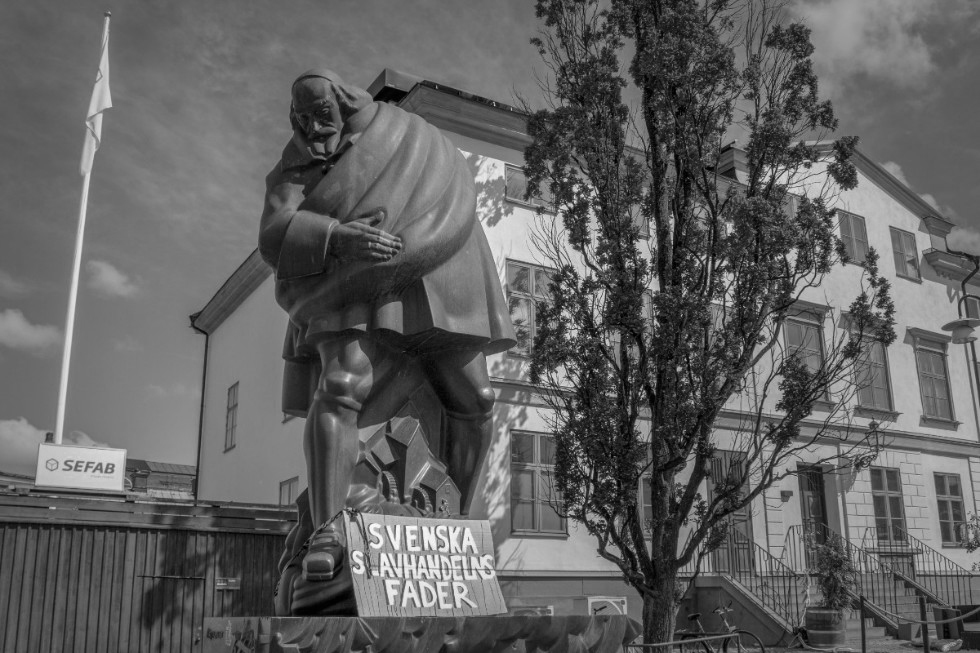
Colonial pasts &
possible futures
In June 2020, a homemade cardboard sign was placed by the statue of Louis de Geer at the central square Gamla Torget in Norrköping, Sweden (Nygren, 2020). The sign stated the father of the Swedish slave trade, referring to how Louis de Geer, an entrepreneur and businessman from the 17th century, is often described as the father of the Swedish industry. Louis de Geer is a well-known historical person, especially in Norrköping, but a less known story is that Louis de Geer established the trading company Svenska Afrikakompaniet, which traded with ivory, gold, and enslaved people from the Swedish colony Cabo Corso, in today’s Ghana (Nationalencyklopedin, n.d.).
Just a month before the cardboard sign was placed by the statue, the African American George Floyd was killed during a police arrest in Minneapolis, USA, which spired to the George Floyd protests and the Black Lives Matter movement becoming even more global than before (Nationalencyklopedin, n.d.). The protests in the USA aimed at racism and police brutality but protestors also turned to target statues and monuments of former slave owners and others associated with racial injustices (Taylor, 2020). These protests and the critique of monuments also spread to Europe, Sweden and Norrköping.
During the summer of 2020, the chairman of the local anti-racist organization Ett Norrköping för Alla (A Norrköping for Everyone), Jimmy Jonsson, also handed in a citizens’ initiative to the municipality (Jonsson, 2021). The initiative suggested to supplement the statue with a sign clarifying Louis de Geer’s part of Sweden’s colonial and racist history, but the initiative was dismissed.
The debate of Louis de Geer and the slave trade started already in 2018 in Norrköping when an art exhibition, Släkten och slavarna (the Family and the Slaves), was showcased at the local art museum Norrköpings Konstmuseum (Scragg, n.d.). The exhibition was made by the artist Carl Johan de Geer, a descendant to Louis de Geer, who had recently got to know how his ancestor participated in the transatlantic slave trade. The exhibition showed Carl Johan de Geer processing and dealing with his own family’s history. During the exhibition Norrköpings Konstmuseum also had a collaboration with the city museum Norrköpings Stadsmuseum, where a pedagogical program aimed for elementary school pupils to learn about the different sides of the history of Louis de Geer, was presented (Kindahl, 2021).
The story of Louis de Geer is though only one part of Sweden’s colonial history and Cabo Corso is not the only colony Sweden conquered (Lindqvist, 2015). The Swedish colonial history is in general not known or told and there are no public monuments or memorials acknowledging it (GIBCA, n.d.). Many former colonized nations around the world have after gaining independence started a process of decolonization (Nayar, 2015). A process where, for example, a national cultural identity can be shaped and established. Decolonization can be performed in former colonial powers as well, even though this process differs from the ones in former colonies. This thesis suggests that public spaces with colonial heritage should be decolonized and investigates how this is possible through the medium of architecture. With postcolonial theory and reference examples this thesis explores five different implementations for decolonizing in Norrköping and shows how the monument of Louis de Geer could be approached in a different way.